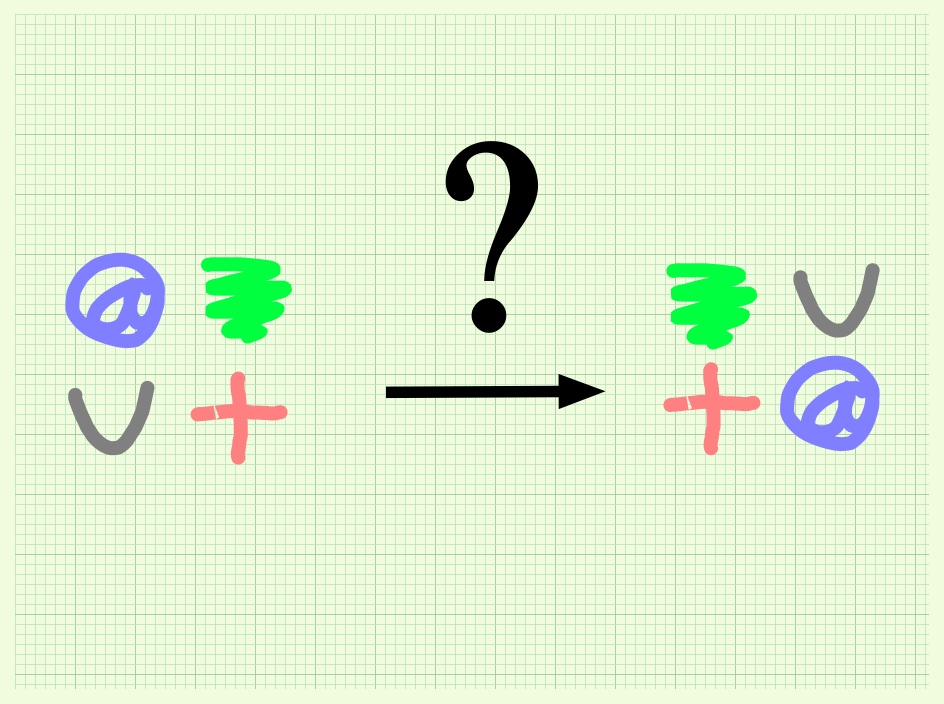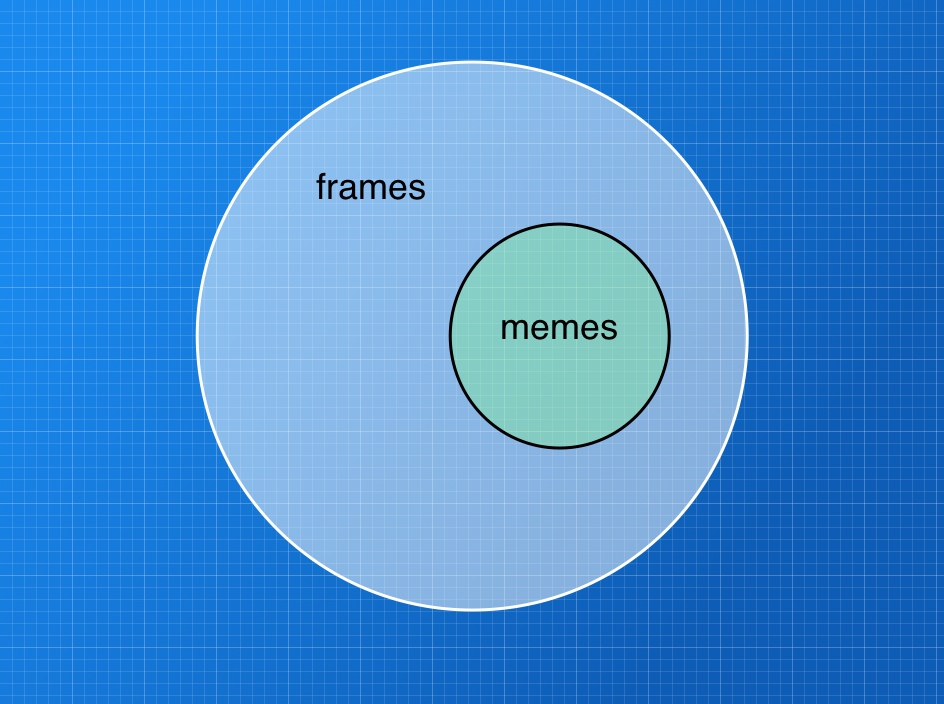Introducing 'Frames Theory' for Innovating in Schools
To change something you first need to perceive it is changeable.
Introducing 'Frames Theory' for Innovating in Schools
'To make the familiar strange, and the strange familiar.'
How to innovate… step back from the familiar, recognise it as arbitrary artifice, and tinker with it.
In that spirit I offer my fellow educators a toolkit I have been working on for a couple of years now.
I call it 'frames theory', and its purpose is to open pathways for innovation by identifying existing components of practice - both physical and psychological - thereby making them ripe for change.
Let the crowd be hushed… Ladies and Gentleman, Steve Collis is delighted to unveil ‘Frames Theory’ and invite collaboration!
It's simple: there are just four 'frames'.
You can use the
four frames to notice distinct components operating at school, and so consider tinkering with them. The components deliberately span domains: physical, mental, social, tech/information.
With a hat tip to Occam and his razor, here they are:
1. Organisation frames (O-Frames) are groups of objects or ideas.
An O-Frame is a cluster of elements (physical objects, ideas) with a discernible set of relationships. Every physical object is an o-frame.
For instance, rows of desks facing the front of a classroom (note that the words 'rows' and 'front' set up organisational relationships).
Beyond School: an atom is as equally an O-Frame as a
company's organisational hierarchy!
2. Sequence frames (S-Frames) are action steps.
An S-Frame is a series of actions taken in sequence over a time period.
For instance, a school routine of lining up outside a classroom, greeting the teacher, then coming in, sitting down, and eyes out the front. Equally, the timetable is an S-Frame, as are social scripts played out unknowingly by teachers and students.
Beyond School: algorithms are S-Frames.
Objects or concepts organised in a particular way,
A sequence of actions.
3. Narrative frames (N-Frames) refer to story-telling.
An N-Frame is specific to psychology. Our minds interpret the world through the filter of story.
A narrative frame contains goodies, baddies, archetypes, goals, pitfalls, & more.
For instance: good guys, bad guys, allies, enemies, a range of archetypes, notions of progress, quests, pitfalls, and more. In school, teachers broadcast N-Frames at learners in phrases that frame 'where we are' and 'where we're heading'.
You can use 'N-Frame' to refer to any of these elements.
Beyond School : ingroup/outgroup thinking, the 'other', and goal seeking behaviour, are all manifestations of N-Frames.
4. Explanatory frames (E-Frames) refer to explanations.
Explanatory frames are our explanations that connect the past to the present and future.
An E-Frame is a theory of cause and effect, such as ‘if I flatter this person they will like me’, ‘that person is angry at me because I forgot their name’ or ‘the climate is warming due to carbon released by human activity’.
For instance: at school, a veritable plethora of invisible E-Frames play puppet-master, sitting behind classroom management – ‘I need order so I can teach’, standard testing – ‘data leads to better learning’ or opposite 'testing wrecks learning', and relational dynamics - ‘the teacher hates me’ or ‘that student sabotages my classes’.
E-Frames are our interpretative apparatus, and they guide our future goal-seeking strategies.
They also happen to be fallible and unreliable to an extreme degree in all matters other than the most concrete propositions. Much damage is caused due to misplaced confidence in E-Frames.
Cognitive biases render most E-Frames useless or harmful, for instance the ‘fundamental attribution error’, whereby we attribute our own behaviour to context, but others’ behaviour to personality.
Beyond School: scientific theories.
all memes are frames but not all frames are memes
Frames vs Memes
Some might equate ‘frames’ with ‘memes’ but they are not the same beast. I'm pretty sure that all memes are frames but I am certain that not all frames are memes.
Using Frames to Innovate
Together, the four frames provide language for identifying changeable components of a situation, from policies, to physical spaces, to teaching philosophies, habits, inventions... just about anything. It's a universal toolkit.
The point is, once we identify an arbitrary frame, we can change it.
That's the whole point!
We can ask, ‘what if we changed that O-Frame to this other one?’ or ‘this E-Frame to this other one?’.
Wondrously, we can dissect and recombine frames with blind impunity, with no master plan for why the new combination will be better. You don't need a plan or a justification! It's called hacking, innovating, reinventing, and it doesn't need a reason.
tinker!
Just mash up some new frames, and see what happens! While you do it you can say "I'm mashing up frames!" like a crazy chef.
A physical example: replace the classroom chairs (O-Frames) with lounges (a different O-Frame) . Do nothing else. See what happens.
A psychological example: as a teacher I might realise take the E-Frame that ‘student X is setting out to sabotage the class’ and replace it with ‘student X is hungry and therefore grumpy’. Whether or not the student is hungry or not is irrelevant – the point is to manipulate the E-Frame (our interpretative theory) and then observe the results.
Similarly you can identify and tinker randomly with S-Frames, N-Frames, or bundles of them.
We don't have to have a master plan to innovate, just the courage to take what we see and tinker with it.
Frames are Everywhere
There is so much more I want to say about my little frames theory. I have been chewing on it quietly for years.
School is only one context - once familiar with the terms, you see frames everywhere!
Piano playing consists of O-Frames and S-Frames. Computer programs are S-Frames and computer memory consists of O-Frames. DNA and proteins are O-Frames. In cells, S-Frames emerge from Brownian motion as O-Frames bump into each other in a molecular storm.
The cat is an O-Frame, and so is the QWERTY keyboard. Together they make a new O-Frame I would like to re-invent such that I can type!
A baseball or cricket field is an O-Frame, but the rules are O-Frames. Listen to the commentary and you’ll hear E-Frames and N-Frames.
Ingredients in a cake are O-Frames, and the cake is an O-Frame, but the recipe is an S-Frame.
Frames provide a vehicle for seeking insights in exotic fields, since they appear in multiple domains, and at multiple scales. Heck, our galaxy is an O-Frame, but so is my cat.
Frames nest within other frames, thereby spanning scales as well as domains.
In coming blog posts I intend to present some case studies on the frames in action, and perhaps get more up close and personal with each of the four frames in turn.
An Invitation to Collaborate
Have I caught your attention? Has a light-bulb plopped on – some intrigue – some sense of potential? Please join me and let’s explore frames together.
First step, leave a comment, won’t you? I need to gauge how accessible I have made the frames.
Second step, I've created a wiki for frames - head over and add something, anything - add just one example of a frame!
Third step, you could post your own blog post where you grapple with frames… I’d love to hear your thoughts and see where you take the ideas.
Creatively,
Steve








